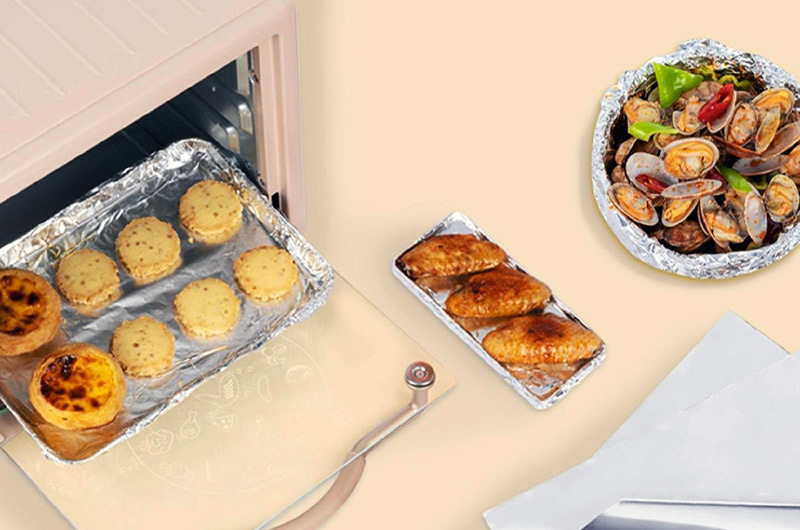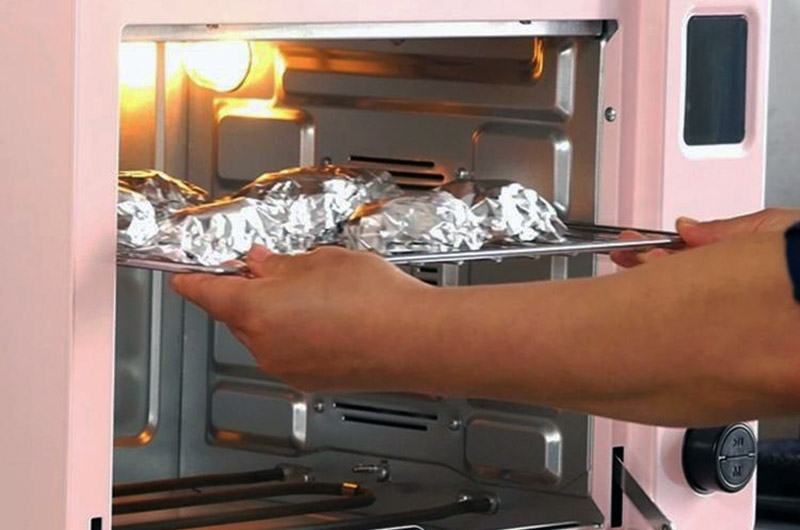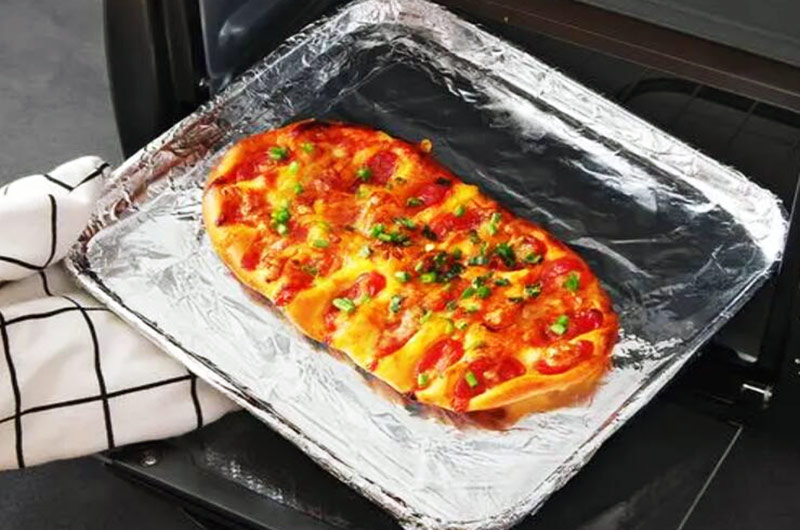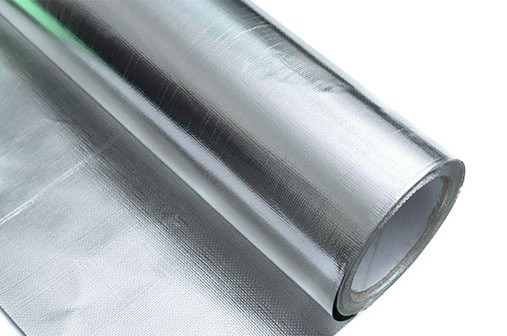- Questions that people often worry about Aluminum Foil di Microwave
- Aluminum foil di microwave safety guide
- Common microwave aluminum foil
- Advantages of aluminum foil for microwave ovens
- Appreciation of aluminum foil cases for microwave ovens
- Related discussion topics about aluminum foil di microwave
- Conclusion
The use of aluminum foil in microwave ovens has been a topic of debate and confusion among users. While aluminum foil is a versatile kitchen tool commonly used for cooking, baking and packaging, there are concerns about its safety when used in microwave ovens.

Questions that people often worry about Aluminum Foil di Microwave
1. Aluminum foil di microwave fire hazard
A common misconception is that using aluminum foil in the microwave can cause a fire hazard. While metal does cause sparks and fires in microwaves, the safety features that modern microwaves come with make this less likely to happen. However, it is crucial to use aluminum foil correctly to avoid any potential risks.
2. Aluminum foil di microwave causes damage to microwave ovens
Some people believe that placing aluminum foil in the microwave can damage the appliance. The inside of a microwave is made of metal, but it's specifically designed to reflect and contain microwaves. If used correctly, aluminum foil will not damage your microwave.
Microwave Reflection: Aluminum foil can reflect microwaves, a property that can be used for specific cooking purposes. For example, wrapping the edges of a casserole dish in foil can help prevent the outer edges from overcooking.
Shielding and Insulation: Aluminum foil can be used to protect certain parts of food from overheating and prevent overcooking. It can also be used to isolate parts of food that cook faster than the rest of the food.
Aluminum foil di microwave safety guide
1. Avoid sharp edges: When using aluminum foil in the microwave, make sure there are no sharp edges or corners to avoid sparks. If necessary, fold or trim the foil to eliminate any potential hazards.
2. Keep it flat: Place the foil flat on the surface of the food to prevent arcing and sparks. Avoid tightly crumpling or folding the foil as this will create areas of concentrated electric fields.
3. Keep a safe distance: Leave enough space between the foil and the inside wall of the microwave to prevent sparks or potential damage. The recommended distance is about one inch.
4. Use microwave-safe containers: Use microwave-safe containers whenever possible instead of relying on aluminum foil. Most containers designed for use in microwave ovens are safe and prevent potential risks associated with metals.

Common microwave aluminum foil
The aluminum foil used in microwave ovens is usually made from a specific alloy called 3003 aluminum alloy. This alloy is favored for its combination of strength, formability and corrosion resistance. Key properties of 3003 aluminum include good thermal conductivity and excellent resistance to chemical agents.
Common thickness
The thickness of aluminum foil used in microwave ovens varies, but typically ranges from 25 to 50 microns (0.025 to 0.05 mm). Thinner foils are typically used for packaging food, while thicker foils are used for specific cooking applications.
Standards and specifications
ISO Standards: ISO standards cover all aspects of aluminum and its alloys. ISO 787 specifies methods for the determination of the chemical composition of aluminum and aluminum alloys.
Advantages of aluminum foil for microwave ovens
While aluminum foil can be useful in certain situations in a microwave oven, it's important to note that caution should be exercised, and it should only be used in specific ways. Here are some potential benefits of using aluminum foil in microwave ovens:
1. Even Cooking
By strategically placing aluminum foil on certain areas of food, you can help promote more even cooking. This is particularly useful for preventing overcooking in specific parts of a dish.
2. Crisping and Browning
Aluminum foil can be used to cover or wrap the edges of certain foods, such as pizza crusts or baked goods, to help them crisp up and brown during microwaving.
3. Shaping and Molding
When shaping or molding certain dishes, such as stuffed vegetables or fish fillets, aluminum foil can provide support and help maintain the desired shape during cooking.
4. Steam Generation
Folding aluminum foil to cover vegetables or fish in a microwave can help create a steam environment, facilitating faster and more even cooking.
5. Splatter Prevention
Placing a loose cover of aluminum foil over bowls or containers can prevent messy splatters inside the microwave, making cleanup easier.
6. Moisture Retention
Covering certain foods, like casseroles or pasta dishes, with aluminum foil can help retain moisture during reheating, preventing them from drying out.
7. Softening
Wrapping items like butter or cream cheese in aluminum foil before microwaving can help soften them for easier use.
It's important to note that while there are benefits to using aluminum foil in these specific ways, caution must be exercised. Improper use, such as allowing direct contact with the microwave walls or using large pieces of foil, can lead to sparks, fires, or damage to the microwave.
Appreciation of aluminum foil cases for microwave ovens
Certainly! Here are specific examples of how aluminum foil might be used in a microwave in daily life, along with corresponding foods:
1. Baked Potatoes
Wrap individual potatoes in aluminum foil before microwaving to ensure even cooking and a fluffy interior.
2. Pizza Slices
Cover the edges of pizza slices with aluminum foil to prevent the crust from becoming too chewy during reheating.

3. Fish Fillets
Mold aluminum foil around fish fillets to help them maintain their shape and cook evenly.
4. Butter or Cream Cheese
Wrap a stick of butter or a block of cream cheese in aluminum foil to soften it for easier spreading.
5. Defrosting Meat
Cover the edges of larger cuts of meat with aluminum foil to prevent premature cooking while defrosting.
6. Vegetables
Create a loose aluminum foil cover over vegetables to create a steam environment for faster and more even cooking.
7. Softening Brown Sugar
Wrap hardened brown sugar in a moistened paper towel, then cover it with aluminum foil before microwaving to soften it.
8. Wrapping Corn on the Cob
Wrap individual ears of corn in aluminum foil before microwaving to steam and cook them.
Remember to follow safety guidelines, use aluminum foil cautiously, and avoid direct contact with the microwave walls to prevent sparks or damage.
Related discussion topics about aluminum foil di microwave
- Can I put aluminium foil in microwave?
- Are aluminum foil containers microwave safe?
- What happens when microwave light hits aluminum foil?
- Can you use a microwave after putting aluminum foil in it?
- how long can aluminum foil be in the microwave
- how to put aluminum foil in the microwave
- why can't you put aluminum in the microwave
- can we use aluminium foil in microwave grill
- can you microwave aluminum foil tray
- aluminum foil in microwave convection oven
- can you put aluminum in the microwave
- can we use aluminium foil in microwave for baking cake
- can you put aluminum foil in the microwave reddit
Conclusion
While using aluminum foil in a microwave requires caution and following safety guidelines, it is not inherently dangerous.
If used correctly, aluminum foil can be a useful tool for certain cooking applications, but it's crucial to prioritize safety to avoid any potential dangers.
Informations you may be interested in:



